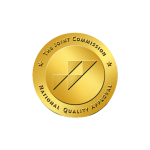What You'll Learn:
- Learn how to wean off alcohol safely with these 11 effective steps.
- Understand the importance of tapering and creating a structured plan to reduce alcohol consumption.
How to Wean off Alcohol Safely
For those struggling with alcohol dependency, quitting cold turkey can be dangerous and lead to severe withdrawal symptoms. A safer alternative for many is to taper down gradually. Learning how to wean off alcohol safely involves careful planning, support, and monitoring, which can reduce the risk of severe withdrawal and help individuals maintain control over their recovery.
1. Consult a Healthcare Professional First
Before starting any plan to reduce alcohol consumption, it’s essential to consult with a healthcare professional. They can assess your individual situation and help you create a personalized tapering plan. A doctor can provide advice on how to wean off alcohol safely, monitor your progress, and suggest medications or therapies to manage withdrawal symptoms.
2. Understand the Importance of Tapering
Tapering refers to gradually reducing alcohol intake rather than stopping abruptly. Knowing how to taper off alcohol is key to preventing dangerous withdrawal symptoms such as seizures, tremors, and extreme anxiety. A slow, controlled reduction allows your body to adjust to lower alcohol levels without triggering severe reactions.
3. Set Clear Goals and Create a Plan
Having a structured plan is crucial when learning how to wean off alcohol safely. Determine how much alcohol you currently consume and create a timeline for reducing your intake. A good rule of thumb is to cut back by 10% to 20% each day or every few days, depending on your doctor’s recommendations. Write down your goals and keep track of your progress.
4. Track Your Alcohol Intake
Keep a detailed log of your daily alcohol consumption. This helps you stay accountable and ensures that you’re following your tapering schedule. Tracking also allows you to notice any patterns that may lead to increased drinking, such as stress or social situations. Being aware of your consumption is an essential part of how to taper off alcohol successfully.
5. Stay Hydrated and Eat Nutritious Meals
When you’re reducing alcohol consumption, it’s important to focus on your physical health. Drinking plenty of water and eating balanced, nutritious meals can help your body recover from the effects of alcohol dependency. Proper hydration and nutrition also make it easier to manage withdrawal symptoms like headaches, nausea, and fatigue.
6. Manage Withdrawal Symptoms
Even with tapering, you may still experience some withdrawal symptoms. Common signs include anxiety, irritability, sweating, and trouble sleeping. Knowing how to wean off alcohol safely means being prepared for these symptoms and having strategies to manage them. Techniques such as deep breathing exercises, mindfulness, and relaxation practices can help alleviate discomfort.
7. Seek Support from Friends and Family
Telling your close friends and family about your plan to taper off alcohol can provide you with a strong support system. Their encouragement can help you stay motivated and hold you accountable for sticking to your plan. Support from loved ones is invaluable when learning how to wean off alcohol safely.
8. Avoid Triggers
Triggers such as certain people, places, or situations can increase the urge to drink. When planning how to wean off alcohol, it’s important to identify and avoid these triggers whenever possible. This might mean skipping social events where alcohol is present or finding new ways to cope with stress without turning to alcohol.
9. Use Alcohol Alternatives
Replacing alcoholic beverages with non-alcoholic alternatives can be helpful during the weaning process. Seltzers, sparkling water, or mocktails can provide the sensation of having a drink in your hand without the alcohol. These alternatives can be a psychological aid, making it easier to stick to your tapering plan.
10. Monitor Your Mental Health
It’s common to experience emotional ups and downs during the weaning process. Anxiety, depression, and mood swings can all arise as your body adjusts to lower alcohol levels. Stay in tune with your mental health and seek professional support if needed. Talking to a counselor or joining a support group can help you stay emotionally balanced as you learn how to taper off alcohol.
11. Recognize When Medical Intervention is Necessary
Even with careful tapering, some people may still experience severe withdrawal symptoms. If you notice intense physical reactions, such as hallucinations, seizures, or delirium tremens (DTs), seek immediate medical attention. This is a critical aspect of understanding how to wean off alcohol safely. Severe withdrawal can be life-threatening and may require hospitalization or medical detox.
How Long Does It Take to Wean Off Alcohol?
This depends on several factors, including how much alcohol you typically consume, how long you’ve been drinking, and your overall health. For some, the process might take a few days, while others may need several weeks to safely taper off alcohol. It’s important not to rush the process and to adjust your plan based on how your body responds. A healthcare provider can give you a better idea of the timeline for your specific situation.
If you're struggling with alcohol dependency and are ready to take the first step toward recovery, learning how to wean off alcohol safely is crucial. At American Recovery, we offer expert guidance and personalized plans to help you reduce your alcohol consumption and begin your journey to sobriety. Contact us at 866-484-2502 for support, treatment options, and resources to help you succeed in your recovery process.


